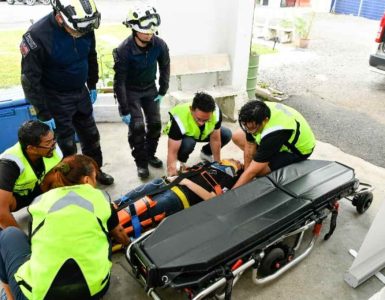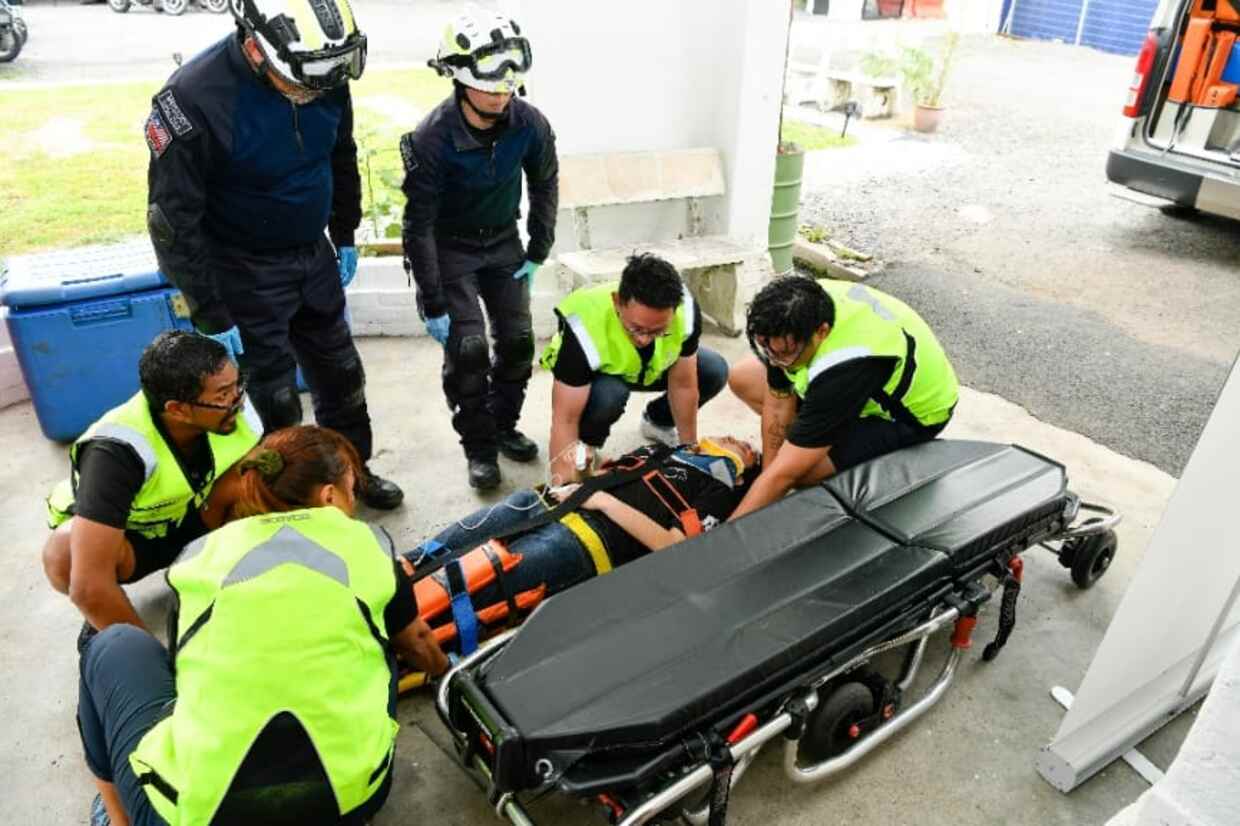In the past three decades, hip fractures from brittle bones have increased five-fold in women aged 50 and above, and 1.5-fold in men of the same age group, according to figures from the Health Promotion Board (HPB) website.
For older adults, a hip fracture due to osteoporosis can have dire consequences. Studies show that one in five people with such fractures die within a year.
Exercise is one of the best ways to build strong bones.
According to orthopaedic surgeon Dr Kevin Lee, recent studies show that the risk of brittle bones disease is lower for active people, especially those who do weight-bearing activities at least three times week. Dr Lee is the medical director of the Centre For Joint And Cartilage Surgery and Singapore Sports Orthopaedic Surgery Centre, subsidiaries of the Singapore Medical Group.
However, he added that not all exercises are equal in strengthening bones.
Here, we look at five workouts that can help strengthen your bones. To reap maximum benefits, Dr Lee recommends exercising an average of three times a week for at least 20 minutes each time. If you are starting an exercise programme for the first time, check with your doctor first.
Tai Chi
Now there’s evidence to show that those elderly but extremely agile tai chi masters you see on television are not just a figment of the producer’s imagination.
New research shows that this form of exercise consisting of slow, gentle body moves can help build strong bones.
Preliminary evidence reported in the Physician And Sportsmedicine journal suggests that tai chi may be a safe alternative to conventional exercise for maintaining bone mineral density (BMD) in postmenopausal women, said Dr Lee. He added that tai chi can also improve balance and musculoskeletal strength, hence reducing the risk of falls.
Bone mineral density (BMD) is one of the key indicators of bone strength. “A low BMD is associated with osteoporosis, which can lead to fractures,” he added.
Walk it out
While running is good for building strong bones, the downside is that this high impact exercise can jeopardise your joints. Dr Lee explained that with each stride you take while running, your lower limb joints have to support a force that is up to six times your body weight.
“Thus a balance has to be sought somewhere in-between. My personal choice would thus be walking,” said Dr Lee.
Alternatively, shorter distance runs (about 10km weekly) would have a lesser impact on the joints.
Weight training
In general, you should opt for exercises which require your muscles to work against gravity. So which better exercise than lifting weights or resistance training to build strong bones? Weight-bearing sports include racquet games and soccer.
Dr Lee explained: “Muscle pulling on bones stimulates bone formation, and thus weight-bearing exercises build denser, stronger bones.”
For safety’s sake, engage a professional sports trainer or physiotherapist to customise a training programme for your fitness level.
Jumping up and down
As unglamorous as they seem, those star jumps may actually do your bones some good, according to research done on mice.
A study published in Pub Med found that the bone density of mice which were on a 200-jumps per week workout routine increased significantly after 24 weeks, compared to mice which were not given any exercise.
New age workouts
Not only do new age exercises like yoga and pilates help improve bone health and coordination (to prevent falls), advocates say they are especially suitable for older folks because there is no impact on the joints.
For instance, Candice Chin, founder of Pilates Fitness, said that pilates helps strengthen bones by beefing up the inner core muscles that are hugging the bones to better support the skeletal structure.
“It also promotes proper alignment of the skeleton structure to improve posture and prevent erosion of certain bone joints especially the pelvis and shoulders,” said Chin, who added that the studio’s oldest student is 80 years old.
Pilates has another benefit: It improves coordination and flexibility of the joints, which are especially important to older folks to prevent falls, added Chin.
Dr Lee agreed that while pilates and yoga can help strengthen bones, they are not as effective as other weight-bearing exercises such as running and weight-training.
If you already have a low bone density, it is important to inform your instructor so that she can modify the exercises to avoid extreme joint movements.
“For clients who have osteoporosis, we generally avoid excessive flexion, extension and rotation exercises,” said Chin.












